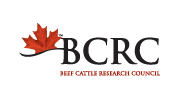Do transportation and rest stops affect lung health?
| Project Code: | ANH.22.18 |
| Completed: | In Progress. Results expected in March 2022. |
Project Title:
Determining the effect of stress on the respiratory microbiome of cattle during transportation
Researchers:
Alexander, Trevor (Agriculture and Agri-Food Canada Lethbridge)
Graham Plastow (University of Alberta); Karen Schwartzkopf-Genswein, Tim McAllister, Dallas Thomas (Agriculture and Agri-Food Canada Lethbridge)
Background
Transportation is stressful, but so is loading and unloading. Research hasn’t determined whether requiring mandatory rest stops to break up long distance transport into more, shorter trips will reduce or increase stress. We do know that stress can increase the risk of diseases like BRD, possibly by disturbing the microbes that naturally live in the respiratory tract and allowing disease-causing microbes to establish a foothold. This project will examine how transportation rest stops affect the respiratory microbiome using cattle involved in an ongoing Beef Cluster funded project.
Objectives
Analyze the respiratory microbiome (bacterial commensals and pathogens; viral agents) in comparison to stress markers (cortisol, blood cell counts, haptoglobin) in cattle subjected to the following transportation stress models:
-
varying rest stop durations (including no rest stop) and time in transport,
-
varying sources of transported calves (low-stress single source ranch versus high-stress co-mingled auction market), and
-
varying rest stop conditions (pen size and density, bedding type and amount, feed and water trough type and dimensions).
What they will do
Deep naso-pharyngeal swabs will be collected from calves from various sources (single-source ranch vs. commingled auction mart calves) that have been transported (36 vs. 12 h) and rested (0, 4, 8 or 12) for various times under varying conditions (pen sizes / densities, bedding, feed and water availability) at 5 different time points in relation to loading, unloading, rest stops, reloading, and unloading to look for differences in the microbiome of the upper respiratory tract. They will look to see whether these factors are related to physiological indicators of stress as well as animal health and performance during the first 30 days in the feedlot.
Implications
A better understanding of how beef cattle transport and rest stop practices affect animal health and welfare should contribute to sound science-based regulations, as well as improved transport practices for Canada’s beef industry.






